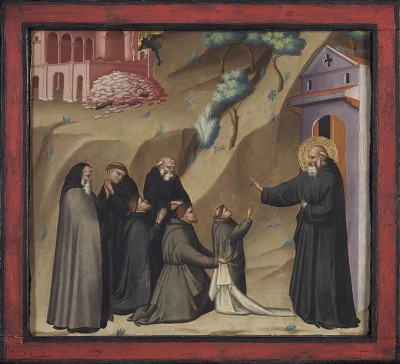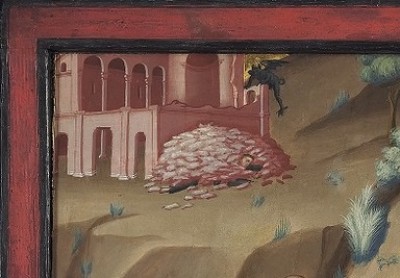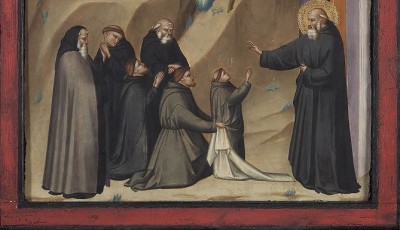The Devil is in the details

A Closer Look is a new blog series examining artworks in the AGO Collection.
When looking at Giovanni del Biondo’s painting St. Benedict Restores Life to a Young Monk, many things may catch your eye. Perhaps it’s the figures, the colours or the gold leaf that depicts the halo around St. Benedict’s head, emphasizing holiness.
These are fantastic details, but if you look a little closer at this 14th century painting from our Collection, you might notice something else – a story coming to life.
The artist used a technique known as continuous narrative, which refers to multiple images of the same people engaging in different activities to portray events over time. In del Biondo’s painting, this shows the story of the premature death of a young monk (at the hands of Satan, no less!) and his resurrection by St. Benedict.
To understand the story, let’s do something unexpected – look to the details in the painting’s background.
Examine the pile of bricks in the upper left corner and you’ll see a tangle of limbs in the rubble. It’s the young monk, crushed to death by a wall that was toppled on to him by Satan (one of the more theatrical demons in our Collection). From there, shift your eye to the front of the painting to reach the story’s conclusion, St. Benedict (standing in front of the door to a monastery) performs a miracle, bringing the monk back to life.
In art, continuous narratives tell a story and add a sense of drama. If the painting only focused on the monk’s death, or only his resurrection, we would lose half the story and it wouldn’t feel as theatrical. Del Biondo offers an emotional tale from start to finish. See for yourself by visiting this painting on Level 1 in the Reuben Wells Leonard Memorial Gallery, Gallery 117.
Enjoyed this close read? Here’s one of a painting by Pissarro.
Are you an AGOinsider yet? If not, sign up to have stories like these delivered straight to your inbox every week.



